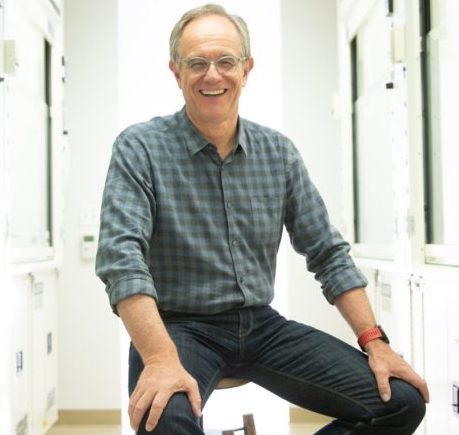by Buck Institute
February 12, 2021 . BLOG
New Year, New Hope
 By Eric Verdin, President and CEO of the Buck Institute
By Eric Verdin, President and CEO of the Buck Institute
I had initially planned this blog for the very beginning of year, but I am glad we waited. We not only had to get through the end of a tumultuous year, we also had to endure an unprecedentedly chaotic beginning to 2021. I am hopeful now that the national temperature is coming down and that the decline in COVID-19 case numbers can be sustained while the vaccine efforts ramp up. Now that we’ve covered all that in the first paragraph, what is left to talk about? Well, we still have the entire issue of aging and age-related disease to tackle!
This is another front that I’m feeling very optimistic about. Even during this year of both upheaval and stasis, the world has taken concrete steps toward a future of universal healthy aging. After being in the field for, *cough*, quite a while, it is truly amazing to watch the acceleration of geroscience as an academic discipline, and it’s reassuring to see awareness and excitement growing amongst health practitioners and social service providers.
In this post I want to share some of the developments that bring me optimism even during these hard times. By sharing them with you, I hope you can move through 2021 with the same feeling of hope that is driving me and the whole Buck Institute forward.
The acceleration of the field, especially in light of the disproportionate impact of COVID-19 on older adults, is truly remarkable. We are at a unique moment when geroscientists (those studying the intersection of aging and disease) continue to make discoveries about basic aspects of aging but also explore novel therapeutics based on these discoveries. The field of senescence, which represents one key area of our work at the Buck, is a great example of this amazing period. A study that came out of the Buck’s Schilling and Campisi labs, led by Dr. Natan Basisty, best illustrates this tipping point. This study developed an atlas of the senescence associated secretory phenotype (SASP). The SASP is a suite of molecules, many of them inflammatory, secreted by senescent cells (cells in a particular state of distress), and has implicated senescent cells in a range of age-related conditions. Senescence has been a focus of aging research for decades, but this study used new technology to show that there is a huge range of molecules secreted by senescent cells. No one has ever described the SASP at this level of detail before, highlighting how much there still is to learn about this important aspect of aging.
Remarkably, the study of senescence has progressed so fast in the past 10 years (in large part due to the pioneering work of our very own Judy Campisi) that it now has direct clinical applications. Many of these secreted molecules are detectable in the blood, and thus might serve as biomarkers to identify risk for specific age-related diseases connected to senescence. Based on this hypothesis, Buck scientists are working with the National Institute on Aging to identify senescent biomarkers for aging in human samples. This represents a huge leap toward turning our science into clinical applications. As we move into 2021, I expect to see more and more examples of basic science making the transition toward the clinic, and the acceleration is a huge source of optimism for me.
Another major source of optimism is the growing recognition from disciplines outside of geroscience that research on aging has the potential to transform the later years for billions around the globe. The global population is indeed getting older: According to Science Translational Medicine, “In 2018, for the first time, the number of people over the age of 64 surpassed the number of children younger than 5. By 2050, nearly 20% of the world’s population will be over the age of 65.” We need interventions that can be scaled globally to reduce healthcare burdens and improve life for everyone. Getting professionals across disciplines excited about this transition is a necessary step to making it reality, and it’s great to see it happening! To promote this shift, the National Academy of Medicine has developed the Healthy Longevity Global Grand Challenge, comprised of two initiatives. First, the Healthy Longevity Global Competition is a funding effort to grant millions of dollars to innovators in fields ranging from social engineering to public health, to science and medicine. The first round of funding was announced in October, and it is inspiring to read about the projects funded through this competition. You can almost think of it like the Genius Awards for Aging—these are ideas that will accelerate us into a world where getting older is a welcome phase of life. The second arm of the Grand Challenge is the Global Roadmap for Healthy Longevity. By incorporating the latest research on social & behavior factors, healthcare systems, and science & technology, this roadmap will provide clear guidance on designing systems to support a thriving older population worldwide.
Watching our science reach maturity at a time when it’s more needed than ever is such a propulsive force. Every day brings specific moments of excitement about the future, and I wish I could share all of them with you. While we’ve already seen 2021 will not be without challenges, I am confident that we will emerge with new discoveries and even more optimism about what lies ahead. I look forward to sharing these developments with you!

SHARE